Inspiration
Written by Lindsay Krause
Hidden within the winding alleyways of the Fez Medina you’ll find the Courtyard Kitchen Fez at Dar Namir. Founded in 2015 by culinary expert and food journalist Tara Stevens, the Courtyard Kitchen Fez at Dar Namir invites food-lovers to step into a world of culinary delight and discover the secrets of traditional Moroccan cooking with a contemporary twist.
Forming part of Ker & Downey® Africa’s exclusive LuxVentures to Come, our 12 day Culinary Journey to Morocco was designed in collaboration with Tara Stevens, who will play a fundamental role in sharing her love of Morocco and its unique cuisine with seasoned travelers. Tara’s immersive culinary workshops aim to inspire and teach travelers a new set of skills that they can still benefit from long after their journey ends.We caught up with Tara to discuss her love of Moroccan cuisine and find out the inspiration behind the Courtyard Kitchen Fez at Dar Namir.

Tara: I originally came to write a story for Condé Nast Traveler, about Mike Richardson at Café Clock. I had heard about him through a friend at the Hay Book Festival and was intrigued by the idea of someone who would give up a high-flying career as maitre’d at some of the world’s most prestigious restaurants (the Ivy and the Wolsely in London) to pursue selling camel burgers in Fez.
After the story was published, Mike asked me to write his cookbook ‘Clock Book: recipes from a modern Moroccan kitchen’. During the course of its research I found myself buying a small dar (courtyard house) near r’Cif in the ancient medina, and I’ve now been here for 10 years.
Tara: It’s the cradle of Moroccan cuisine, yet in many ways remains undiscovered. The restaurant scene is still very young, yet its culinary history dates back centuries. So, there’s a lot to discover if you know where to look.
And I’m not just talking about tagine or couscous. There are the slowly cooked lamb mechouias (traditionally cooked whole over a spit, adapted at the courtyard kitchen to something you can do in the oven), flower waters and aromatics like preserved lemons, rose petals and fermented butter all waiting to be explored as new ingredients.
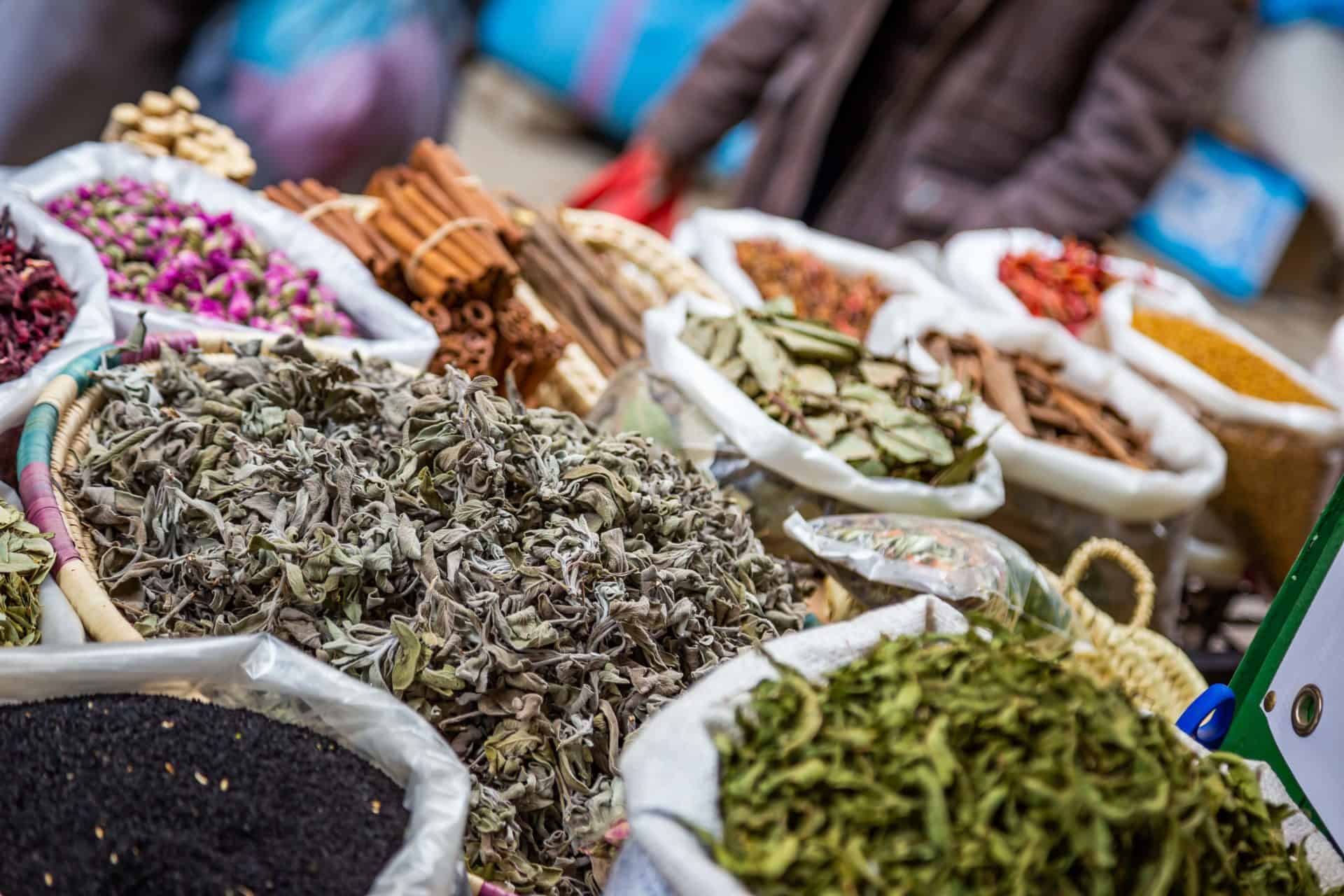
These days you can have street food for lunch (I often snack on chermoula-stuffed fried sardines and aubergines, or kefta packed into fresh from the oven khobz, or paper cones filled with makouda – fried potato cakes), and new wave Moroccan in the evening (Najat Kaanache at Nur is arguably the country’s most forward-thinking chef in terms of a contemporary interpretation of the cuisine).
You can visit organic goat cheese farms, learn to make distilled flower waters (in season) and nut butters, or head out of town to discover clay oven bakers and Atlas trout farmers. My 2-night, live-in courses make all of this possible.
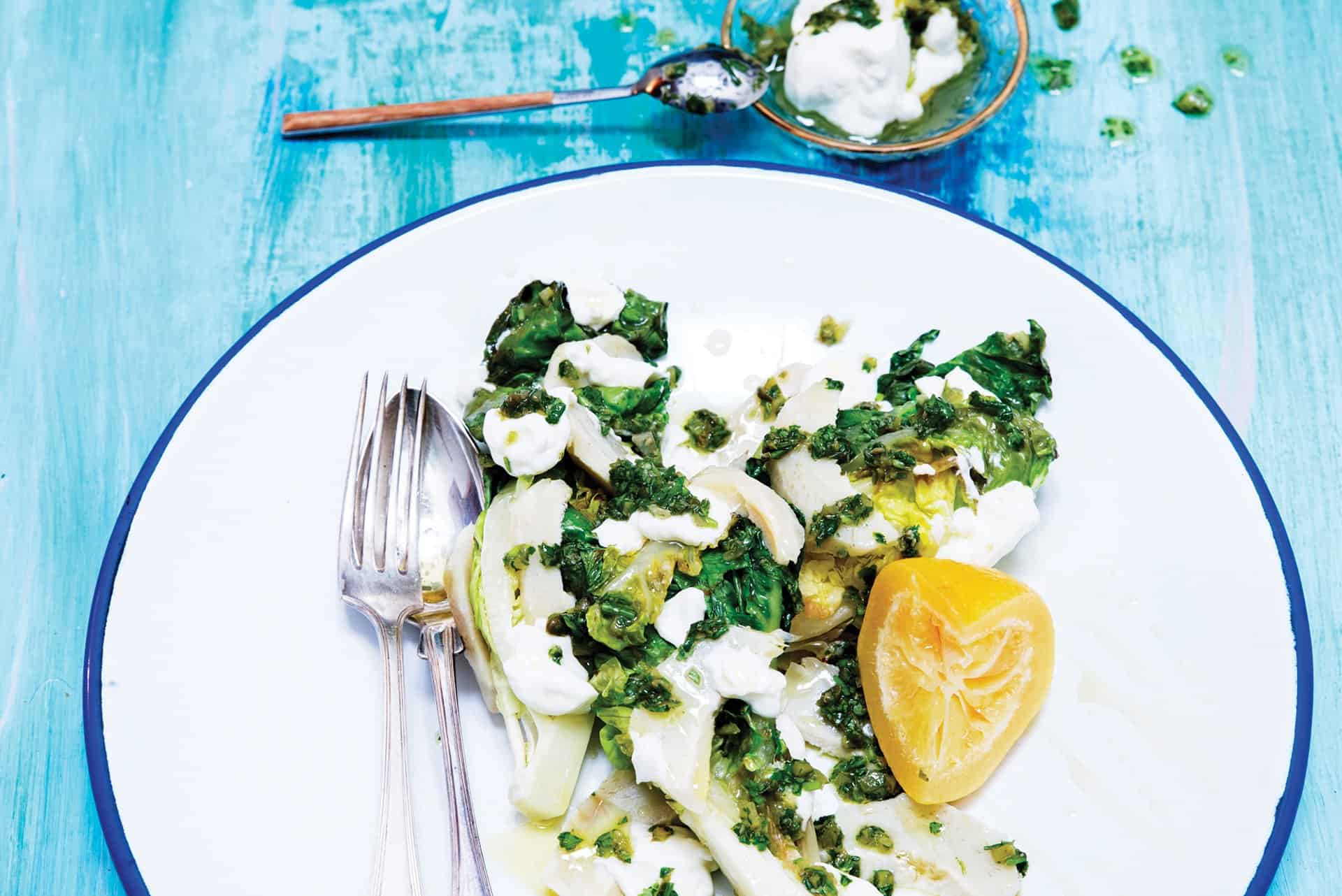
Tara: I adore bissara – the thick, pale, green fava or split pea soup served here as a street food for breakfast. Traditionally you sprinkle cumin and drizzle olive, or Argan oil, on top. At the Courtyard Kitchen, we top it off with some hot and sweet day-pickles. I have no shame in serving something this simple to friends as a midweek supper, and neither should you. It’s the most comforting, sustaining thing on earth.
My favourite tagine is a Fassi institution: chicken, preserved lemon and olive. Done right, it’s a taste sensation. I also love the springtime lamb, artichoke and pea tagines.
Zaalouk – smoky aubergine salad, is the one dish that nearly everyone requests on their menu when we’re putting together a class, and I love this one, because Rachida (my assistant) makes it perfectly and it’s a chance for her to hone her teaching skills.
Truthfully, I’m not mad about Moroccan sweets and pastries. They are too sweet for my tooth, but I do enjoy corn de gazelle (half-moon shaped pastries filled with almond paste and contained within gossamer thin pastry). I don’t have the manual dexterity to make them well, but again, Rachida is brilliant at it, and these too feature fairly regularly on our menus.
Tara: When I first came to Fez I remember feeling that it’s culinary evolution had got stuck somewhere along the line. The food hadn’t changed for centuries, which isn’t a bad thing, but it had all the qualities of being something more without losing its identity.
I believed there was an opportunity to help move Fez, and indeed Morocco, into the next chapter of its culinary history and so in 2015 I set up the Chefs in Residence project at Restaurant Numero 7 (now Nur). I invited chefs from all over the world to come and live and work in the Fez medina for a period of 2-3 months, on the premise that they must source all their ingredients from within the medina or from nearby farms, and serve a fresh interpretation of Moroccan food. The next generation of its culinary evolution if you will.
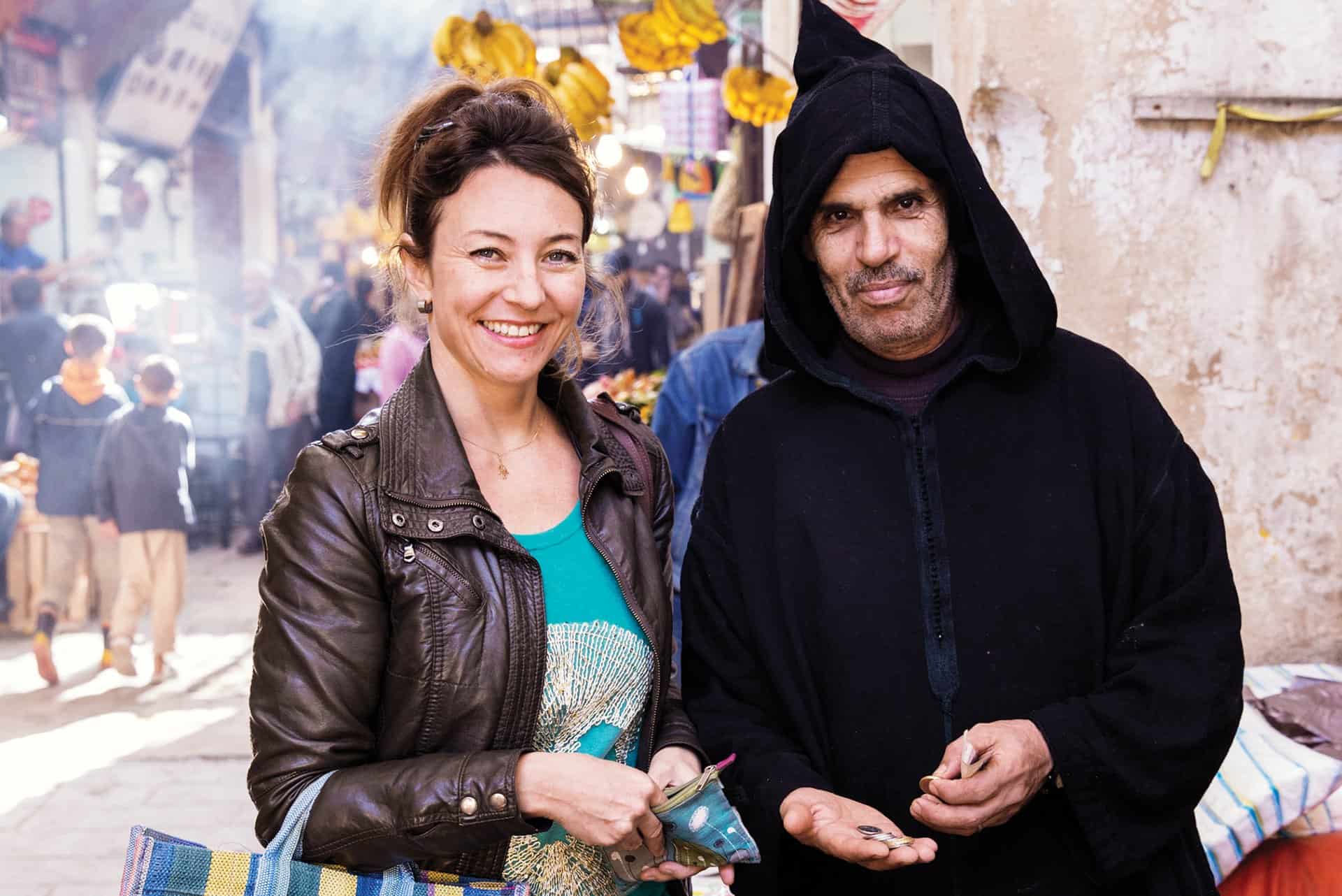
The project ran for two years with chefs as diverse as Jerome Waag (formerly Chez Panisse, California), Analiese Gregory (Franklin, Tasmania) and Harry Cummins (La Mercerie, France) at the helm. It garnered press from all over the world.
Simultaneously, I launched the Courtyard Kitchen Fez at the end of 2015, with a similar remit in mind, and I’ve been going strong now for nearly 5 years.

Tara: I’m not interested in competing with Moroccan cooks. I believe if you want to learn to make a terrific tagine or couscous you should go to a Moroccan woman. What I offer is the ‘what else’.
I take typical ingredients and traditional recipes and look at what else you can do with them, and how you can incorporate those flavours into a culinary repertoire that is more in keeping with modern life.
In my case, I look for dishes that are fresh, light, bright and healthy. They tend to be plant-forward rather than meat heavy, vegetables are raw or cooked briefly, grains outside of couscous are incorporated for their nutty qualities. Basically, I like turning things on their heads.
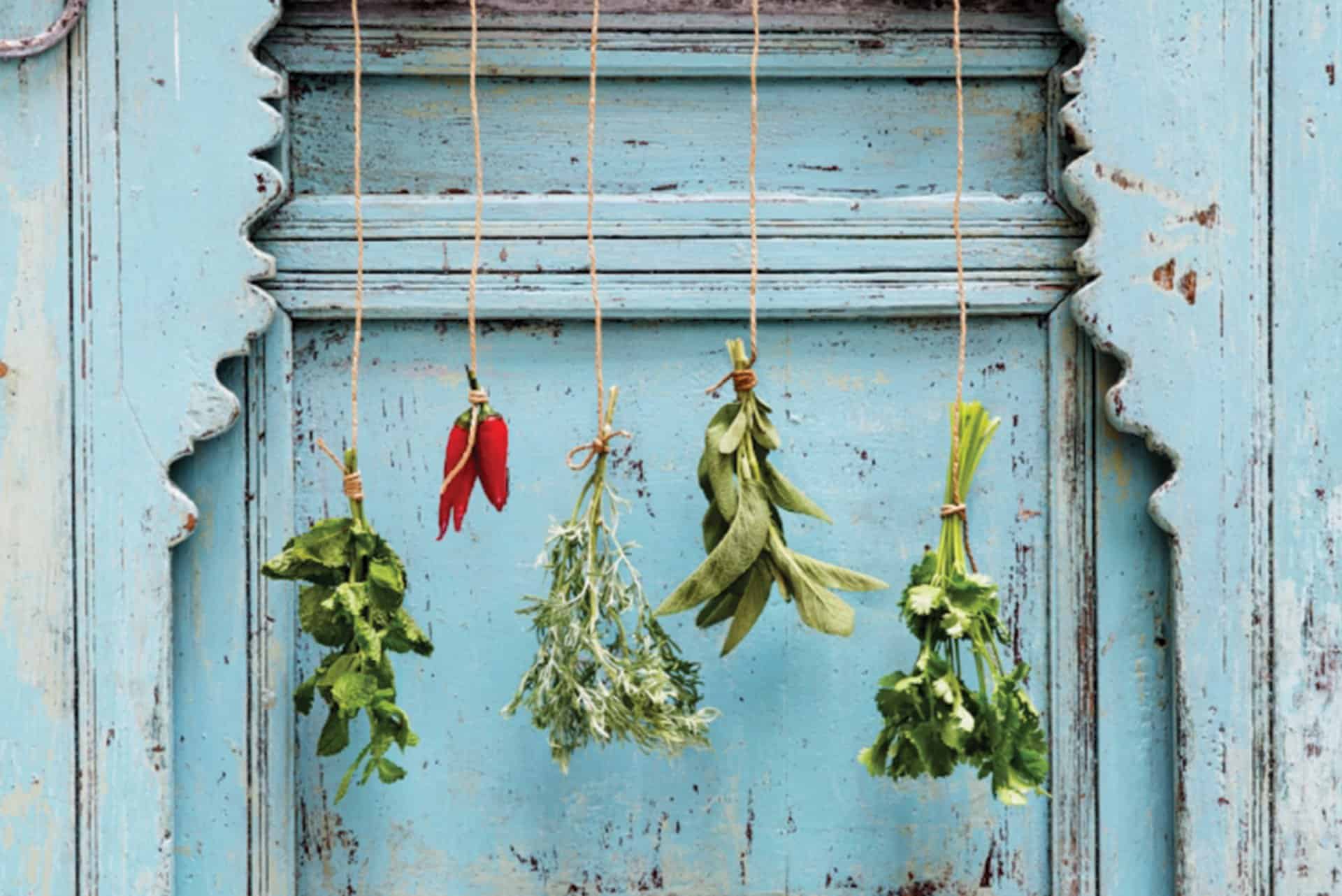
That is not to say I don’t do tagines or couscous at all. I simply approach them in a different way. Our chicken tagine for example employs French techniques to layer-up the flavours, and we make a fantastic rabbit, apricot and pecan tagine, which is not the kind of thing you’d see in restaurants, but the flavours are just dreamy.
We’re also big on turning classics into something new. Taking the chicken, preserved lemon and olive tagine again as an example, I turn it into crunchy, triangular briouats (hand-pies) and instead of pigeon pastilla, I use warka to make goats cheese, thyme and pink peppercorn ‘cigars’. Both can be big batched and frozen. Both are fabulous as drinks party canapes. Especially with champagne. I urge everyone to try it.
My main course lamb mechouia, takes a shoulder of lamb rubbed lavishly with various spices, which is then slow-baked with a glass of wine on a bed of fennel. That might be served with crisp, ras al hanout roast potatoes and a green salad tossed with a preserved lemon vinaigrette. It’s a great, exotic-feeling alternative to Sunday lunch and I often serve it at Easter.
One of the most popular desserts is a dark chocolate and rose water olive oil cake, served with a dollop of crème fraiche. Or our riff on the classic orange and cinnamon salad, jazzed up with a whole spice syrup and fresh mint leaves. I prefer it to the more typical British Christmas pudding, and my entire family is now converted.
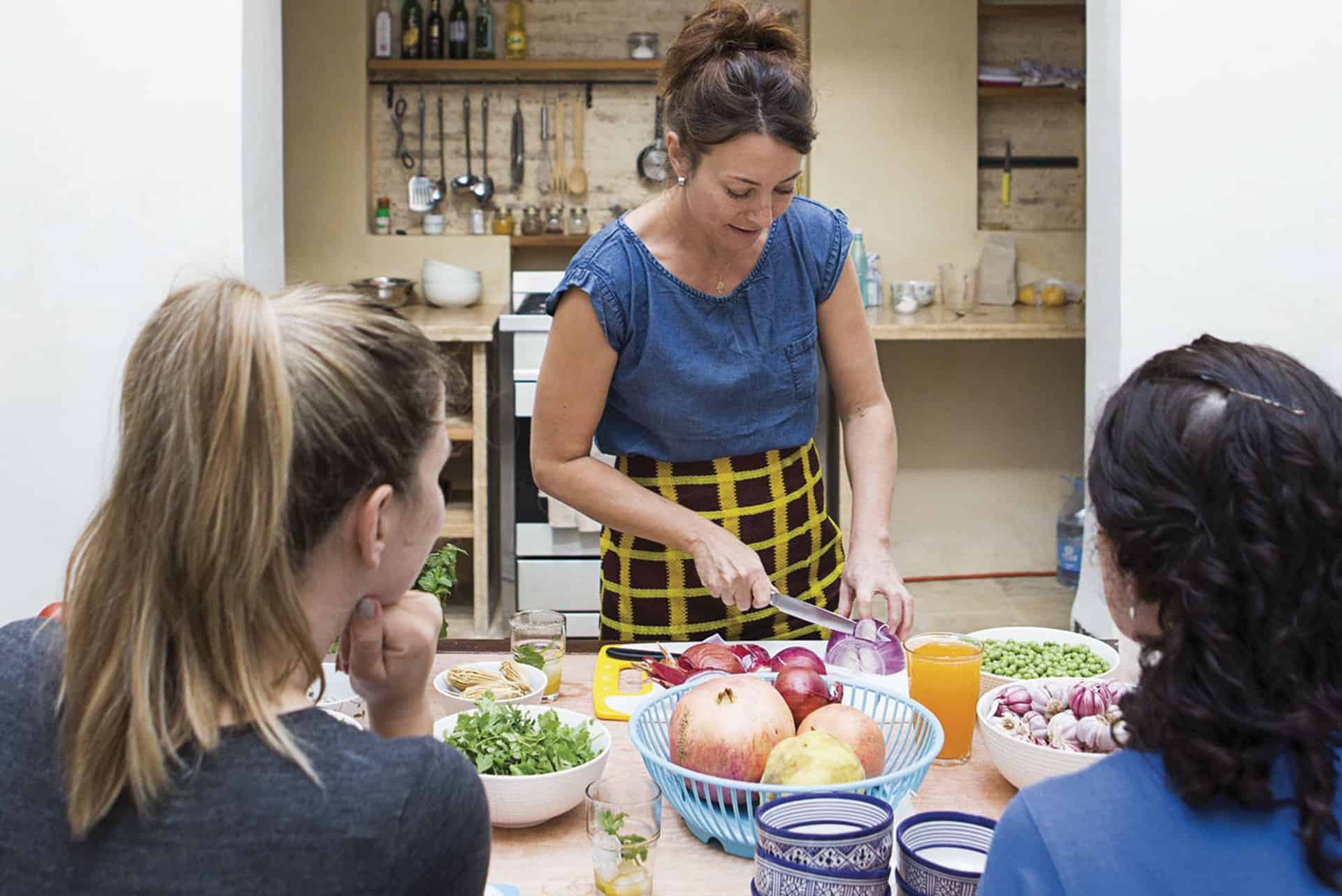
Tara: In the days post Covid-19 many travelers will be reassured to know I only offer fully privatized cooking experiences, in groups of maximum 6 pax, and the house is fully disinfected between each course. That said, the vast majority of my classes consist of only 2 pax, plus myself or Maciek (my cooking teacher associate) and Rachida (our assistant).
Guests can be sure of lots of personal attention and plenty of time to talk all-things-Morocco (the conversation often strays from just food to how to buy and restore a house in the Fez Medina, to where to go eat when you get to Marrakech).
Post Covid-19, for the time being, I am not offering trips into the market to buy ingredients (they are too crowded and I don’t want to take the risk for either my team or my guests), but we do a solid introduction to Moroccan ingredients, flavor profiles and how all those things fit together at the house.
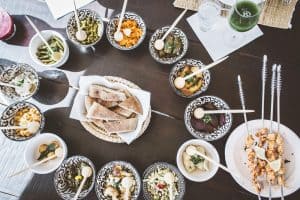
Menus generally consist of 5 different dishes, and these are discussed with guests beforehand. Allergies, likes and dislikes are considered, so that you get the kind of menu you’ll actually want to cook. Usually it’s a tapas style menu, or a dinner / lunch party format, but I’ve also been asked for new ways with brunch and drinks parties. At the end of the day it’s your class, so speak to me, let me know what suits you.
Finally, we do serve seasonal, signature house cocktails – favourites include a Pomegranate Sporco and an Hibiscus Sour – as well as Moroccan boutique wines to keep things festive. Funnily enough, people LOVE this.
Classes are structured to feel like spending a day / half day with friends – the Courtyard Kitchen is a proper home, not a stripped-back, stainless steel cooking school – which culminates in a long, lazy lunch (served on the roof terrace if weather permits).
There is nothing formal about it, there’s no rushing, and many past guests have said it was the highlight of their trip to Morocco.
Tara: Lots of insight into what Moroccan cuisine is, certainly, but more importantly how to adapt it to their own lifestyles.

Basically, I want our guests to go away feeling really inspired to get back to their own kitchens and cook. To feel invigorated, rather than stressed, by the idea of gathering friends and family at the table. To see food and cooking as fun and creative, rather than a chore.
But if they don’t want to cook, they could always come for lunch or dinner. Private dining is on the menu too.
Discover Morocco’s culinary scene alongside Tara Stevens on our 12 day Culinary Journey to Morocco and perfect the art of Moroccan cooking while exploring the country’s culinary hotspots – Fez, Marrakech and Skoura.
Ker & Downey® Africa is compliant with COVID-19 Industry Protocols.


Head office: 7 Bree Street, 6th Floor, Touchstone House, Cape Town, South Africa
+27 (0)21 201 2484
enquiries@ker-downeyafrica.com
United Kingdom: Sportsman Farm, St Michaels, Tenterden, Kent
Ker & Downey® Africa is compliant with COVID-19 Industry Protocols.